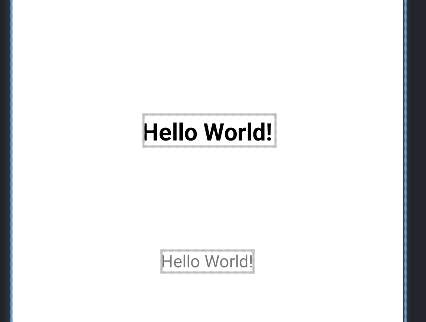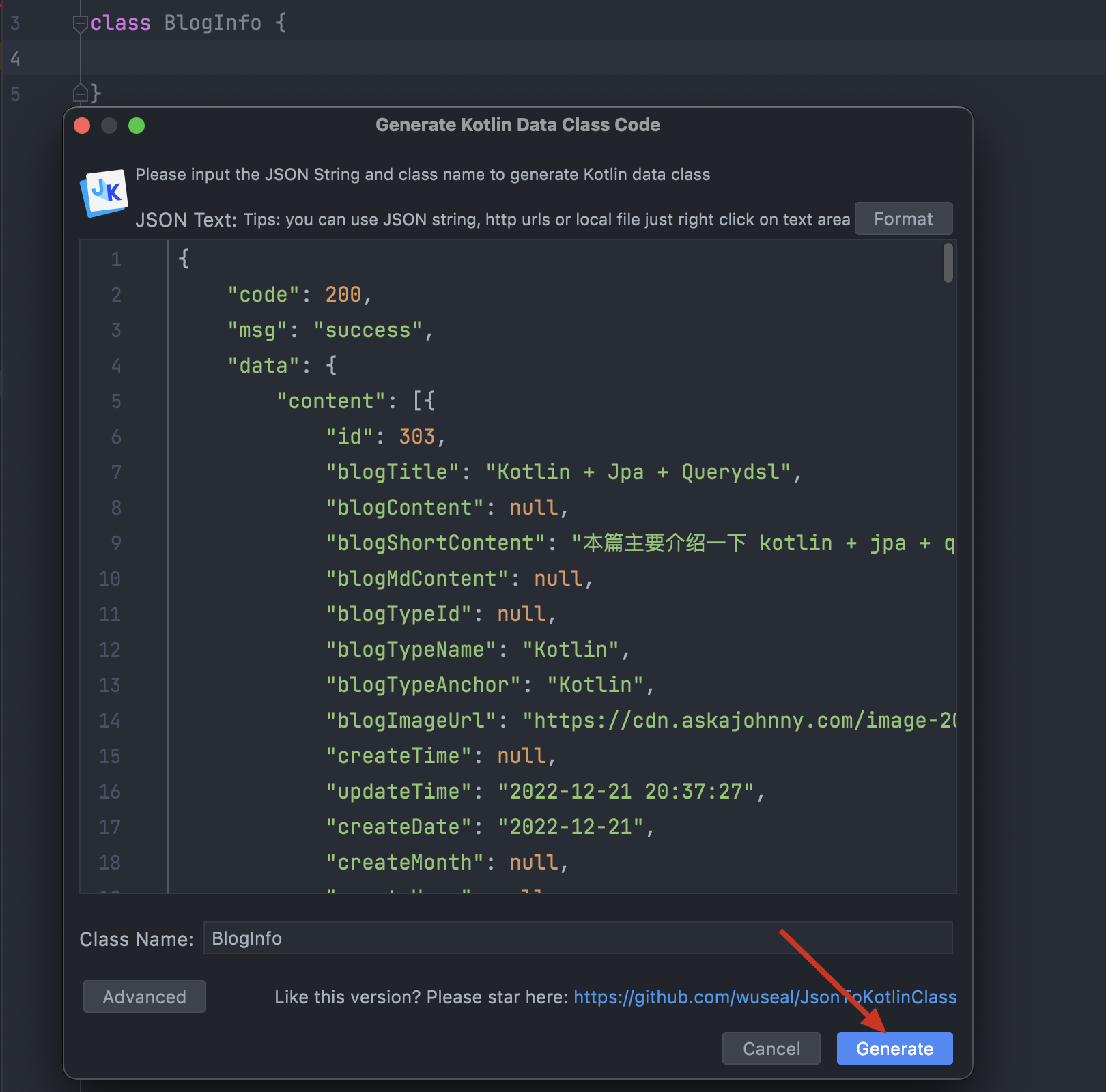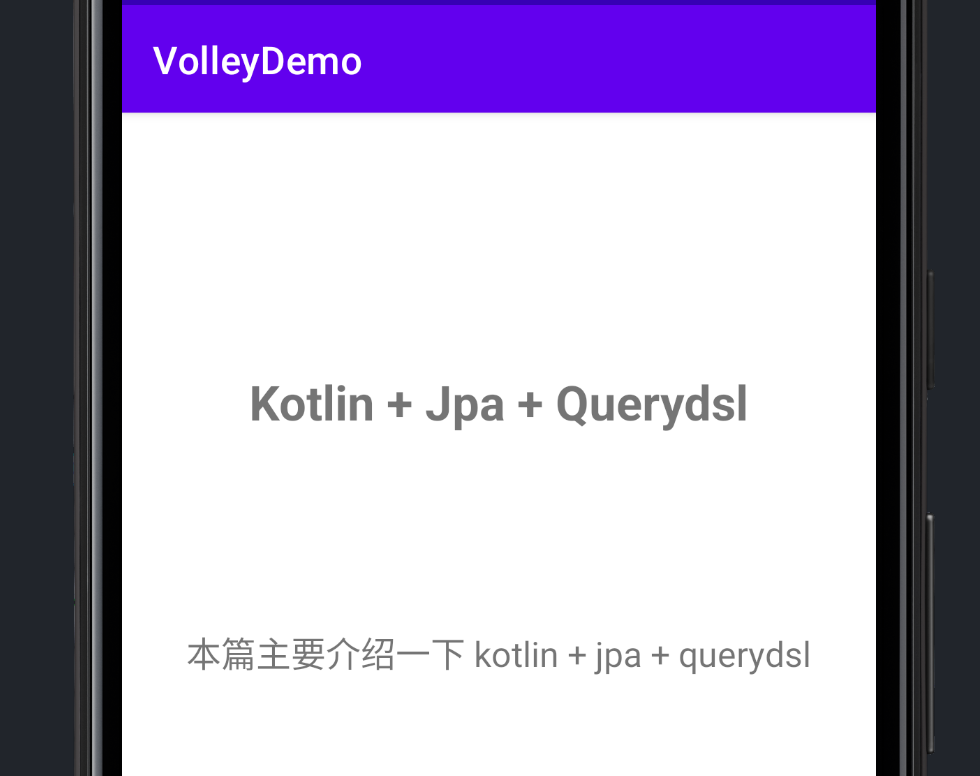Android Volley 基本使用
Android Volley 基本使用
本篇主要介紹 Google 給Android 平臺提供的 Volley 一個 Http請求庫 , 齊射!
1.概述
Volley是Google 提供的一個小巧的非同步請求庫,擴充套件很強支援okhttp,(預設是 Android2.3 及以上基於 HttpURLConnection,2.3 以下基於 HttpClient 實現), Volley 英文齊射的意思 就是指無數急促的請求,適合資料量小,並且通訊頻繁的場景
官方檔案 https://google.github.io/volley/

2.準備工作
想通過 volley 呼叫一個我自己的部落格文章介面 然後展示標題 和 短描述 到 頁面上
2.1 編寫佈局檔案
上面展示標題 下面展示 短描述

<?xml version="1.0" encoding="utf-8"?>
<androidx.constraintlayout.widget.ConstraintLayout xmlns:android="http://schemas.android.com/apk/res/android"
xmlns:app="http://schemas.android.com/apk/res-auto"
xmlns:tools="http://schemas.android.com/tools"
android:layout_width="match_parent"
android:layout_height="match_parent"
tools:context=".MainActivity">
<TextView
android:id="@+id/showTitle"
android:layout_width="wrap_content"
android:layout_height="wrap_content"
android:text="Hello World!"
android:textStyle="bold"
android:textSize="25sp"
android:textColor="@color/black"
app:layout_constraintBottom_toBottomOf="parent"
app:layout_constraintEnd_toEndOf="parent"
app:layout_constraintStart_toStartOf="parent"
app:layout_constraintTop_toTopOf="parent"
app:layout_constraintVertical_bias="0.2" />
<TextView
android:id="@+id/showShortDesc"
android:layout_width="wrap_content"
android:layout_height="wrap_content"
android:text="Hello World!"
android:textSize="18sp"
app:layout_constraintBottom_toBottomOf="parent"
app:layout_constraintEnd_toEndOf="parent"
app:layout_constraintStart_toStartOf="parent"
app:layout_constraintTop_toBottomOf="@+id/showTitle"
app:layout_constraintVertical_bias="0.2" />
</androidx.constraintlayout.widget.ConstraintLayout>
2.2 提供部落格介面地址
#隨便找了我的一篇部落格的 請求地址
https://www.askajohnny.com/blogs/blogInfo/303/15
2.3 通過JSON To Kotlin Class 外掛生成 data class (kotlin)
和 IDEA 中 Json Formatter外掛類似,它是生成JAVA的, 而這個 JSON To Kotlin Class 外掛是用來生成kotlin 的資料類的
右擊檔案 Generate.. 或者 control + 回車 喚起轉化視窗

package com.johnny.volleydemo
data class BlogInfo(
val code: Int,
val `data`: Data,
val msg: String
)
data class Data(
val anchors: List<Anchor>,
val blogContent: String,
val blogImageUrl: String,
val blogMdContent: String,
val blogShortContent: String,
val blogTitle: String,
val blogTypeAnchor: Any,
val blogTypeId: String,
val blogTypeName: Any,
val clickCount: Int,
val createDate: String,
val createMonth: Any,
val createTime: String,
val createUser: Any,
val id: Int,
val isThumbed: String,
val nextBlogId: Any,
val nextBlogTitle: Any,
val previousBlogId: Any,
val previousBlogTitle: Any,
val thumbCount: Int,
val updateTime: String
)
data class Anchor(
val anchorId: String,
val anchorName: String
)
3.引入依賴
根據你的dsl 語言 選擇適合的方式引入依賴
Groovy
dependencies {
implementation 'com.android.volley:volley:1.2.1'
}
Kotlin
dependencies {
implementation("com.android.volley:volley:1.2.1")
}
4.傳送請求
使用 volley 需要先構建一個請求, 並且把請求提交到 newRequestQueue 佇列中, 提交後 volley 會根據構建的請求非同步傳送請求, 只需要在回撥的地方處理請求的響應即可
4.1 StringRequest 構建請求
volley 提供了 StringRequest 構建請求
override fun onCreate(savedInstanceState: Bundle?) {
super.onCreate(savedInstanceState)
setContentView(R.layout.activity_main)
val titleTextView = findViewById<TextView>(R.id.showTitle)
val shortDescTextView = findViewById<TextView>(R.id.showShortDesc)
//使用 volley需要建立一個Queue
val requestQueue = Volley.newRequestQueue(this)
//請求的 部落格 url
val url =
"https://www.askajohnny.com/blogs/blogInfo/303/15"
//構建StringRequest請求
val stringRequest = StringRequest(Request.Method.GET,
url, {
//由於我後端沒有在header 的 charset中返回 UTF-8 所以預設當做ISO-8859-1格式
//所以這裡需要先轉化成 UTF-8
val data = String(
it.toByteArray(Charsets.ISO_8859_1),
Charsets.UTF_8
)
Log.d(TAG, "onCreate: stringRequest ${data}")
//通過Gson轉化 成上面生成的 資料類
val blogInfo = Gson().fromJson(data, BlogInfo::class.java)
//把後端返回的資料 展示在 textview上
titleTextView.text = blogInfo.data.blogTitle
shortDescTextView.text = blogInfo.data.blogShortContent
}, {
Log.d(TAG, "onCreate: stringRequest error ${it.message}")
})
//把請求推入 queue 會自動進行非同步請求
requestQueue.add(stringRequest)
}
效果如下..

4.2 JsonObjectRequest 構建請求
按照 JSONObject 獲取資料
第二個引數 null 表示Get請求 第二個引數如果有設定 則是post方式
GET 請求
override fun onCreate(savedInstanceState: Bundle?) {
super.onCreate(savedInstanceState)
setContentView(R.layout.activity_main)
val titleTextView = findViewById<TextView>(R.id.showTitle)
val shortDescTextView = findViewById<TextView>(R.id.showShortDesc)
//val url = "https://weather.api.bdymkt.com/day?city=無錫"
//
val requestQueue = Volley.newRequestQueue(this)
val url =
"https://www.askajohnny.com/blogs/blogInfo/303/15"
val postRequest = object : JsonObjectRequest(url, null,
{
Log.d(TAG, "volleyInitData: request success $it")
titleTextView.text = it.getJSONObject("data").get("blogTitle") as String?
shortDescTextView.text = it.getJSONObject("data").get("blogShortContent") as String
}, {
Log.d(TAG, "volleyInitData: request error ${it.message}")
}) {
override fun getHeaders(): MutableMap<String, String> {
val headers = mutableMapOf<String, String>()
headers["Accept"] = "application/json"
headers["Content-Type"] = "application/json; charset=UTF-8"
return headers
}
}
requestQueue.add(postRequest)
}
POST請求
此時 第二個引數設定了JSONObject() 是 post方式
val jsonObject = JSONObject()
jsonObject.put("pageNumber", 0)
jsonObject.put("pageSize", 20)
val jsonArray = JSONArray()
jsonObject.put("ids", jsonArray)
//此時 第二個引數設定了 是 post方式
val postRequest = object : JsonObjectRequest(requestUrl, jsonObject, {
Log.d(TAG, "volleyInitData: jsonstr:$it")
val jsonStr = it.toString()
val blogInfo = Gson().fromJson(jsonStr, BlogInfo::class.java)
blogAdapter.list
.addAll(blogInfo.data.content)
blogAdapter.notifyDataSetChanged()
}, {
Log.d(TAG, "volleyInitData: request error ${it.message}")
}) {
override fun getHeaders(): MutableMap<String, String> {
val headers = mutableMapOf<String, String>()
headers["Accept"] = "application/json";
headers["Content-Type"] = "application/json; charset=UTF-8";
return headers
}
}
5. 擴充套件
5.1 新增 Header 和 Params
注意 需要object: 進行匿名內部類, 重寫 getHeaders getParams getPriority 等等方法
//注意 需要object: 進行匿名內部類, 重寫 getHeaders getParams 方法
val stringRequest = object : StringRequest(Request.Method.GET,
url, {
val data = String(
it.toByteArray(Charsets.ISO_8859_1),
Charsets.UTF_8
)
Log.d(TAG, "onCreate: stringRequest ${data}")
val blogInfo = Gson().fromJson(data, BlogInfo::class.java)
titleTextView.text = blogInfo.data.blogTitle
shortDescTextView.text = blogInfo.data.blogShortContent
}, {
Log.d(TAG, "onCreate: stringRequest error ${it.message}")
}) { //最後面 大括號 裡面是匿名內部類重新方法
override fun getHeaders(): MutableMap<String, String> {
//返回 map map裡面新增 需要放入Header的資料
return super.getHeaders()
}
override fun getParams(): MutableMap<String, String>? {
//返回 map map裡面新增 需要新增的 query params
return super.getParams()
}
//指定 優先順序
override fun getPriority(): Priority {
return Priority.HIGH
}
}
5.2 取消佇列中的請求
如果想把佇列中的請求取消 , 需要給請求設定一個 tag , 然後呼叫佇列的 cancelAll 可以把指定tag的請求取消了
//...
stringRequest.setTag("obj");
queue.add(objRequest);
//取消請求
queue.cancelAll("obj");
總結
本篇主要介紹 andriod 中 Volley的基本使用方式,它是官方開發的一個HTTP框架 簡化操作 , Volley 的設計目標就是非常適合去進行資料量不大,但通訊頻繁的網路操作,而對於巨量資料量的網路操作,比如說下載檔案等,Volley的表現就會非常糟糕
亂碼問題參考:
https://blog.csdn.net/yangbiyao/article/details/51270839
歡迎大家存取 個人部落格 Johnny小屋
歡迎關注個人公眾號
